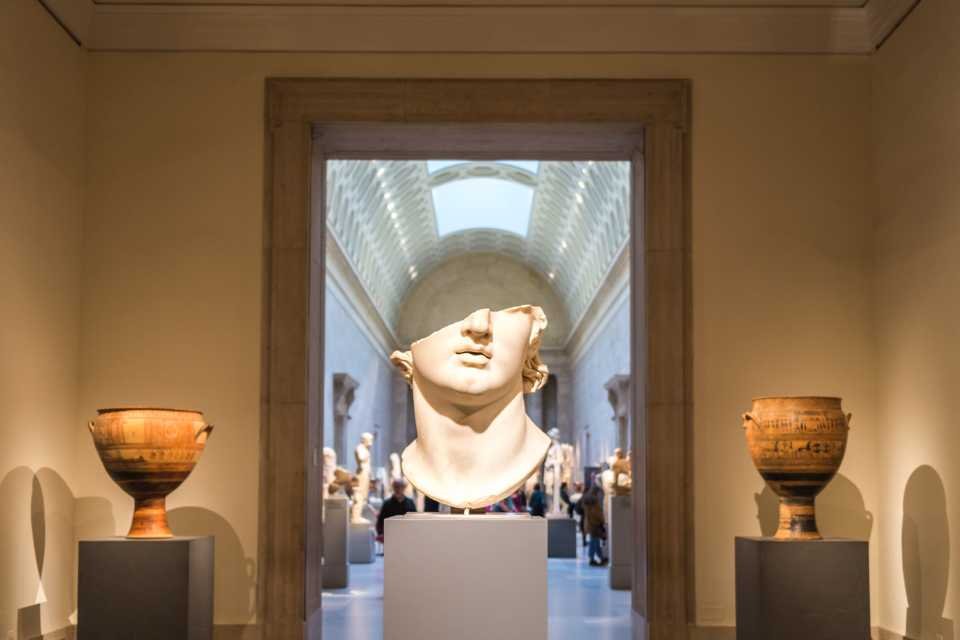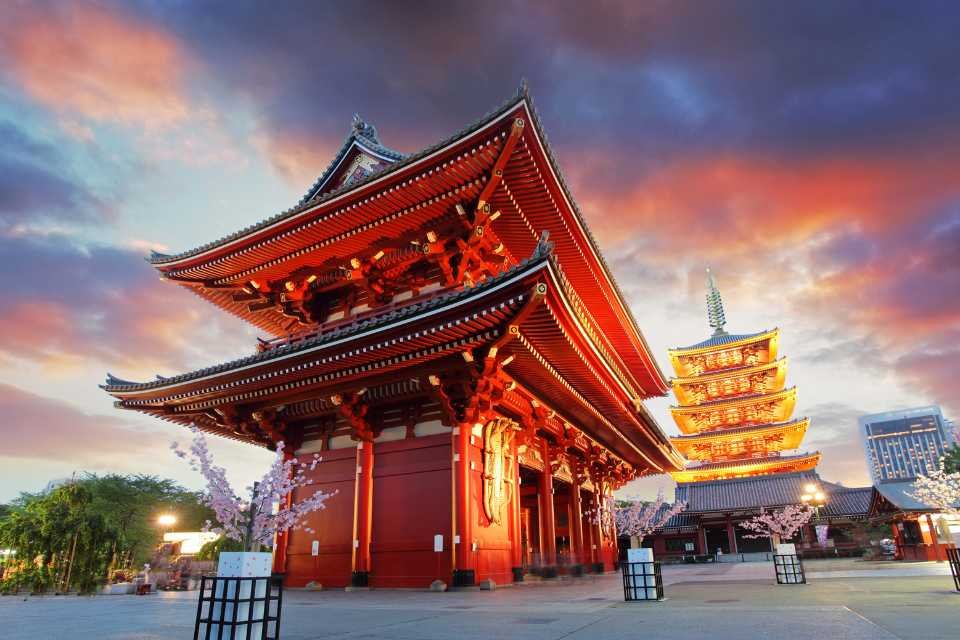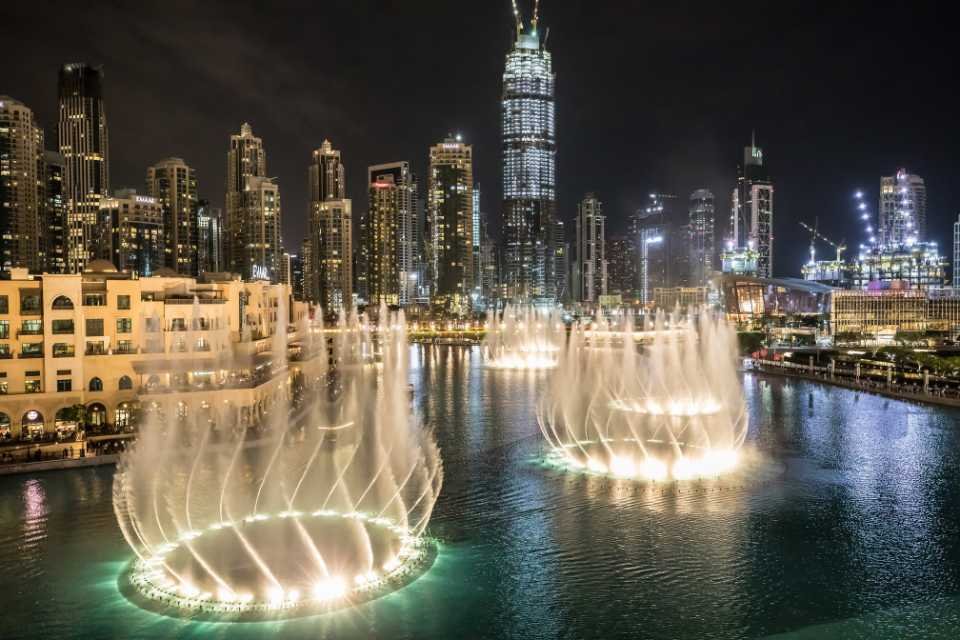New York Metropolitan Museum of Art travel guide
Explore thousands of incredible artefacts and pieces of art
The Metropolitan Museum of Art, or the Met if you’re a true New Yorker, is the city’s largest collection of priceless artworks and cultural artefacts. There are now over two million pieces in the collection, which dates back to the 18th century and was founded by European immigrant artists. It's located in one of New York City's most popular neighbourhoods and is surrounded by the gorgeous greenery of Central Park.
Here’s our guide to help you get the most out of your trip to the Met.
This article may contains links to our affiliate partners.
About the Met
There are 17 acres of exhibit space at the Metropolitan Museum of Art, and it's filled of wonders that have enthralled visitors since 1870. In addition to the oldest piano in the world and works by Dutch artists such as Vermeer, you can view everything from Sasanian textiles from the 6th century BCE to the renowned portrait of Washington Crossing the Delaware by Emanuel Gottlieb Leutze.
Where is the Metropolitan Museum of Art, New York?
The museum is located on the Upper East Side, at 1000 Fifth Avenue.
When is the best time to visit the New York Metropolitan Museum of Art?
The museum is open seven days a week from 10 a.m. to 9 p.m. on Sundays, Tuesdays, and Thursdays, and 10 a.m. to 5 p.m. on other days. Wednesdays are the only days it is not open.
The Museum is usually quieter midweek, with Saturday being the busiest day. However, school field trips can pack out the museum later in the week, so aim to visit on a Monday or Tuesday.
Metropolitan Museum of Art tickets
Purchase tickets online at the Met website or at the museum gate. The Metropolitan Museum of Art began charging non-residents of New York, New Jersey, or Connecticut an admission fee in 2018, shifting away from its longstanding pay-as-you-wish admission policy. Adults, seniors 65 and older, and students must pay a combined total of $25 when visiting from outside the area. There is no charge for children under the age of 12.
As always, we advise booking your Metropolitan Museum of Art tickets in advance.
What’s the best way to get to the Metropolitan Museum of Art, New York?
The easiest way to get to the Metropolitan Museum of Art is on the New York Subway. Take the 4, 5, or 6 lines to 86th St, which is a dedicated station for the museum.
What to see at the Met
The 151st anniversary of the opening of the Metropolitan Museum of Art is a significant milestone in the history of the institution. New York City's 19th-century immigrant population needed to be educated about the city's multiculturalism, and this museum was a way to do just that! Many museums throughout the world are grappling with the question of whether the stated aim has been met by modern, post-colonial criteria in recent years.
Still, the Metropolitan Museum of Art is an ever-evolving masterpiece. According to a PBS documentary to air in 2021, the museum's 150th anniversary year was supposed to be a time for celebration, but instead evolved into a time for rethinking how the museum approaches both diversity and accessibility.
Asian Art
A collection of 35,000 artefacts dating back as long as 5000 years can be seen in the Asian Art galleries at The Metropolitan Museum of Art. Some of the oldest non-European art in the Met's collection is a result of the museum's first patrons bringing it into their collection. Paintings, woodcuts, textiles, pottery, decorative objects, lacquers, calligraphy, and metalwork by Chinese, Korean, Japanese, Indian, and Tibetan masters, as well as Ming vases, Edo-era kimonos embroidered with scenes from The Tale of Genji, and Korean master artists' illustrations of Buddhist sutras in gold and silver, are all waiting to be discovered.
Islamic Art and Artifacts
Artworks from carpets, cast metal artefacts, printed folios, tiled prayer niches, and even caskets are featured in a distinct collection of Islamic art. Iranian mosaics and a gold jar built in Goa for holding bezoars (talismanic gallstones) are among the collection's many one-of-a-kind pieces, which combine Islamic arabesques and Portuguese colonial influences. An astronomical instrument belonging to the Yemeni prince, Yusuf al-Muzaffari, should not be missed by travellers.
The Egyptian Collection
One of the most popular displays at the Met is the Temple of Dendur. An ancient Egyptian temple that was relocated in the 1960s and meticulously reconstructed decades later was returned to its original place. The Pharaoh is depicted performing ceremonies in praise of the goddess Isis in its reliefs. The Sackler Wing, the museum's newest addition, is a work of art in and of itself: a temperature-controlled tower of glass and steel that communicates the Met's power like the Temple of Isis does Isis.
The Japanese Art Reading Room on the wing's second floor is a great place to get a bird's eye perspective without fighting the crowds.
Near Eastern Art
The Metropolitan Museum of Art houses a vast collection of Middle Eastern art and artefacts in fifteen halls. Assyrian stones, cuneiform tablets, and ancient Iranian pottery are just few of the artefacts that may be found in this museum collection. Assyrian city of Nimrud's famous lamassu statues are both little and large, and look out for incense holders and drinking cups to large-scale sculptures.
Arms and Armor
A private donor made the Arms and Armor Department a part of the Met in 1912 and the collection developed tremendously as British culture changed as the Edwardian Age gave way to world wars. The museum's 1,000 objects on display include samurai armour from Japan's 16th and 18th century, Turkish swords produced during Suleiman the Magnificent's reign, and Tibetan relics.
Frank Lloyd Wright’s living room
The architectural diversity of the Met is one of its greatest assets. You're looking at a bronze beaux arts lamppost, and then you're thinking of the pure geometric shapes of modernism. An original living room from the Francis W. Little House, 1912-1914, a summer residence on Lake Minnetonka, is on display in the Frank Lloyd Wright Room. The building's sweeping horizontals evoke the prairie landscape's flat plain and vast horizon. The room, which is 55 feet long, is the centre of the house, with a red-brick fireplace, oak panelling, and copper-plated window frames.
All of the furnishings, including oriental prints and a lot of plants, were either designed or selected by Lloyd Wright.
The Cloisters
Despite their popularity, the Met Cloisters are not located on the museum's Fifth Avenue grounds, where the remainder of the collection can be found. It sits on a hilltop overlooking the Hudson River, surrounded by the Met's Medieval artefacts, such as the famed Unicorn Tapestry series (1495–1505), frescoes, paintings, and more. Located in the middle of a bustling city, it provides a peaceful haven for these pieces of art, which frequently have a religious significance.
European Paintings
With Roman sarcophagi and 174 paintings from Europe, the Met was able to get its collections off the ground. Numerous works of art from the 13th through the 20th centuries are now shown on the museum's second floor. There is a 1290 CE Duccio di Buoninsegna Madonna, a 1650 Velázquez picture of Juan de Pareja, and a 1912 Gustav Klimpt painting of Mäda Primavesi.
The Meeting of Alexander the Great and Diogenes by Gaspar de Crayer, sold to the Met by co-founder John Taylor Johnson, is one of these original members of the collection. New acquisitions like Virgin and Child Enthroned and the 1636 van Dyck portrait of English Queen Henrietta Maria, gifted to the Met by Jayne Wrightsman in 2019, are also newcomers to the museum. There's no shortage of individuals, stories, and approaches to learn about in this field.
The American Wing
The American Wing is home to 20,000 works of art by artists of Indigenous, Latin American, African American, and European origin, spanning the country's long and diverse history. There's a little bit of everything here, from beautifully carved and inlaid Tsimshian headdresses to crisp Victorian pictures to sumptuous Federal furniture.
Colonization and imperialism have become more prominent in the Met's global collections, which were established during a time when criteria for respectful acquisition of cultural artefacts were significantly lower. A new Met commitment to influencing debates about its collections and engaging a broader range of viewpoints is on full show, however, in the museum's new American Wing. Some of the museum's more recent acquisitions in the American wing reflect a growing commitment to correcting the museum's track record on incorporating Black artists, while other recent exhibitions have incorporated Indigenous reactions to the collection's Euro-American works.
Department of the Arts of Africa, Oceania, and the Americas
The Nelson A. Rockefeller wing of the museum displays a wide range of works from Africa, Oceania, South and Central America, and the Caribbean. Despite the old origins of the ceramics, textiles, jewellery, clothes, and other archaeological artefacts on show, the expansion of this collection makes it appear relatively recent compared to other parts of the museum.
While this wing is being renovated through 2024 to better showcase these stunning works, it is still in the works. Another objective is to bring more natural light into the galleries, highlighting how vibrant and vibrant many of these artworks can be.
Bronze statues by Kenyan-American artist Wangechi Mutu, covering four front facade spaces for sculptures that were left unfilled for 117 years of the museum's history, are part of attempts to make the Met more accessible and complete.
Metropolitan Museum of Art tours
The Metropolitan Museum of Art offers self-guided audio tours in ten languages for $7/$5 (adults/children); a free smartphone app provides extracts from the tours. Free guided tours are available at several galleries. A three-day pass includes entrance to both the Met Breuer and the Cloisters.
Sculpture pieces by contemporary and 20th-century artists are on display in the magnificent roof garden from April through October, but the stunning views of the city and park are the true lure. You can sip on a cocktail from the rooftop bar, the Cantor Roof Garden Bar, while watching the sun set.
Another great way is to book a guided Met tour with a local expert. This way, you’ll gain additional insights and won’t miss things that you may not have seen by exploring yourself.
Is the Metropolitan Museum of Art accessible?
Visitors with disabilities can access the building through the parking garage at Fifth Ave. and 80th St. and through the Fifth Ave. and 81st St. entrances. Elevators are available for people who need to avoid steep steps or incline in order to visit the Met in a wheelchair or other mobility device. Wheelchairs can be borrowed from the coat check at the 81st Street entrance on a first-come, first-served basis.
Food and drinks at the Met
There are numerous food alternatives at the Met, ranging from a cup of coffee to a full supper. Don’t bother with a packed lunch as the choice is excellent and nothing is too overpriced.
Smart-casual is the dress code of the Met's Dining Room, found close to European Sculpture and Art Deco Galleries on the 4th floor. This will require a reservation and is more formal than the other eateries in the museum.
Open from 11am to 4:30pm, the Petrie Court Café is situated in the European Sculpture Court.
Located in the Charles Engelhard Court on the first floor, the American Wing Café serves breakfast, lunch, and dinner daily from 10 a.m. to 8 p.m., and from 10 a.m. to 8 p.m. on Fridays and Saturdays.
The Great Hall Balcony café and bar can be reached through the elevator at the European Sculpture and Decorative Arts Galleries' second floor balcony, which overlooks the Great Hall Cantor Rooftop Garden Bar. Hours of operation may vary.
In addition to the Great Hall Balcony, the Balcony Lounge is located on the second level next to the Great Hall Balcony, which is open from 10 a.m. to 5 p.m. daily and 10 a.m. to 8 p.m. on Friday and Saturday.
Other attractions near the Metropolitan Museum of Art
Solomon R. Guggenheim Museum
Frank Lloyd Wright created the Solomon R. Guggenheim Museum, which is located on Manhattan's Upper East Side, in 1959. The museum's famous white atrium, which spirals upwards into a skylight, lures visitors in addition to its extensive collection of modern and contemporary art.
American Museum of Natural History
The American Museum of Natural History is one of the world's largest scientific and cultural museums, with over 30 million specimens and artefacts and around 50 exhibits. All kinds of fascinating things are on display, from dinosaur fossils to human evolution to the solar system.
Central Park
The 843 acres (341 hectares) of green space that make up Central Park include running routes, a lake, wetlands, zoos, ponds, fountains, gardens, and a skating rink. Since 1857, New Yorkers and tourists alike have flocked to this National Historic Landmark to take a break from the concrete jungle of Manhattan.
Read: The best parks in New York City
Jewish Museum
On New York's Museum Mile, the Jewish Museum is both an art museum and a cultural centre. A celebration of Judaism and Jewish culture can be found with world-class fine arts exhibits, ranging from monograph shows to group exhibitions. There is something for everyone at the Jewish Museum, from modern art to panel discussions and more.
Insider Tips for visiting the Metropolitan Museum of Art
Don't forget to bring comfortable shoes because the Met is massive!
Take 81st street to the left of the main gate and you'll find the Education Wing entrance, which is usually less crowded on weekends, holidays, and inclement weather
Check your coats and bags so you can move freely around the museum
Dedicate a full day if you want to – there’s lots to see
Don’t bother photographing everything, it’ll take too long – buy a souvenir book at the end for professional shots of the masterpieces
Take a guided tour to get even more insights
Visit on Monday or Tuesday to avoid big crowds














